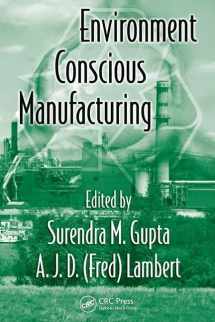
Environment Conscious Manufacturing
Book details
Summary
Description
Hotter temperatures, less arctic ice, loss of habitat―every other day, it seems, global warming and environmental issues make headlines. Consumer-driven environmental awareness combined with stricter recycling regulations have put the pressure on companies to produce and dispose of products in an environmentally responsible manner. Redefining industrial ecology, while reconsidering the original definition, Environment-Conscious Manufacturing explores topics such as industrial metabolism, product design for the environment, design of reverse and closed-loop supply chains, and disassembly modeling, using case studies to support the discussion.
After introducing basic concepts and the historical roots of environment conscious manufacturing (ECM), the text covers algorithms and heuristics; design for disassembly; the environment, recycling, and remanufacturing; disassembly process planning and scheduling; environmental impact assessment models; lifecycle assessment; logistic aspects; product reuse and recovery; and sustainable products. The chapter contributors discuss the selection of economical products, collection centers, recovery facilities, production facilities, second-hand markets and new products, the optimal transportation of goods, and the evaluation of a marketing strategy and futurity of used products. The book ends with an overview of the barriers to ECM and explores how to use integrative structural modeling to investigate, analyze, and overcome them.
“Environmentally friendly” has evolved from reluctant compliance with required regulations to a mechanism for gaining the competitive advantage and an important part of strategic management. Expected benefits of this paradigm shift include safer and cleaner facilities, lower future costs for disposal and worker protection, reduced environmental and health risks, and improved product quality at lower cost and higher productivity. Describing the basic elements of ECM, this book gives you the tools and techniques for developing ECM strategies.


We would LOVE it if you could help us and other readers by reviewing the book
Book review



